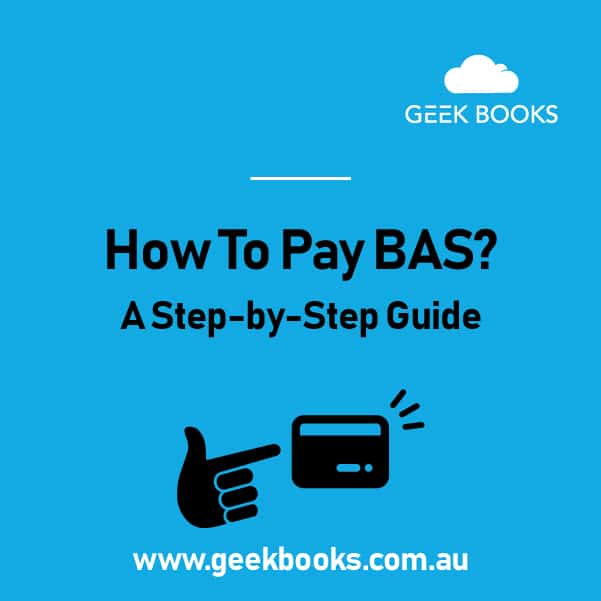In the 2022-2023 fiscal year, the Australian Tax Office (ATO) collected over $80 billion in GST revenue alone.
Clearly, BAS payments are a significant part of Australia’s economic landscape.
Paying Business Activity Statements (BAS) correctly and on time is non-negotiable for business owners.
It’s not just about avoiding penalties; it’s also about maintaining compliance and ensuring your business runs smoothly.
This guide will walk you through the essential steps of how to pay your BAS right every time.
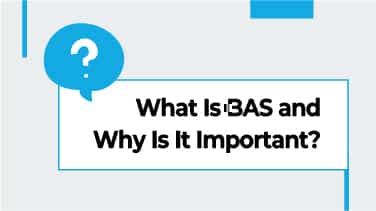
What Is BAS and Why Is It Important?
A BAS is a form you must fill out and lodge every quarter if you own a business in Australia that turns over $75,000 or more annually and is therefore registered for GST.
BAS is important because it helps you report and pay several types of taxes simultaneously.
The key components of BAS are
- GST (Goods and Services Tax): Tax you collect when you sell goods or services and the tax you pay on business expenses.
- PAYG (Pay As You Go) withholding: The tax you hold back from payments to employees and some contractors.
- PAYG instalments: Prepayments towards your expected annual income tax.
- FBT (Fringe Benefits Tax): Tax you pay on non-cash employee benefits you provide.
- Fuel Tax Credits (FTC): Not a tax liability, but a refund from the government for the fuel tax you’ve already paid.
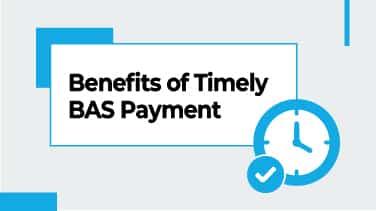
Benefits of Timely BAS Payment
Punctual BAS payments aren’t just a legal requirement; they’re a cornerstone of sound financial planning and business management.
Firstly, you dodge late fees. Secondly, timely payments earn you a favourable standing with the ATO, reinforcing your business’s credibility and reputation.
Beyond these immediate benefits, submitting your BAS on schedule provides valuable insights into your financial standing.
It helps you understand your revenue, expenses, and overall business performance.
Lastly, if you’re struggling with cash flow, submitting your BAS on time allows you to negotiate a payment plan with the ATO.
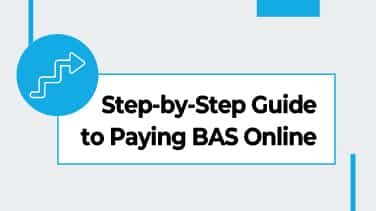
Step-by-Step Guide to Paying BAS Online
If you’re wondering how to lodge your BAS and pay the relevant taxes, the ATO offers a few online options.
There are online services for businesses, individuals, and sole traders that allow you to lodge your BAS through your myGov account.
If you run a larger company, SBR-enabled software allows for secure lodgement directly from your financial, accounting, or payroll software.
Here’s a step-by-step guide to using the ATO’s “Online services for businesses, individuals, and sole traders” option.
Step 1: Access the ATO Portal
Go to the ATO website and log in using your myGovID.
If you don’t have a myGovID yet, download the myGovID app on your smartphone and follow the prompts to set up your digital identity.
Step 2: Enter Business Information and Tax Obligations on the BAS Form To Calculate Tax Amounts
Once logged in, click the “Business Activity Statement” option and select the BAS form for the period you want to lodge.
Now, input the requested information in each section. The form will prompt you to enter the amounts you’ve calculated for each of the following tax obligations, if applicable.
- Calculate GST collected. Add up all the GST (10%) you’ve collected from sales during the reporting period.
- Calculate GST credits. Total the GST you’ve paid on business expenses, also known as input tax credits. You’re usually eligible to claim back this amount.
- Subtract GST credits from GST collected. To find out your net GST, subtract your GST credits (what you’ve paid) from the GST you’ve collected (what you’ve charged customers).
- PAYG withholdings. If you have employees, add up all the tax you’ve withheld from their paychecks.
- PAYG instalments. If you’re paying income tax through PAYG instalments, this will be based on an estimate of your annual income tax liability. The ATO usually sets this amount, but you can vary it if your circumstances change.
- Calculate Fuel Tax Credits (FTC). Multiply the total litres of eligible fuel you’ve used by the current FTC rate. Check the ATO’s website for the latest rates.
- Other tax obligations. Your BAS may include other items like wine equalisation tax or luxury car tax. If applicable, calculate these too.
The portal will offer helpful tools or links to clarify what information is needed for each section.
Some fields may even auto-calculate based on the data you enter, making the process easier.
Step 3: Step 3: Review and Submit the Form
Double-check all figures to avoid mistakes, as errors can lead to penalties or delays. Once you’re confident everything is correct, click ‘Submit’.
After successfully lodging your BAS, you’ll receive a confirmation message with a receipt number for your records.
Step 4: Make the Payment
Once you’ve verified all amounts, choose the BAS payment process that’s convenient for you.
Follow the on-screen instructions to complete the payment.
You’ll receive a confirmation message once it’s processed, which you should keep as proof of payment.
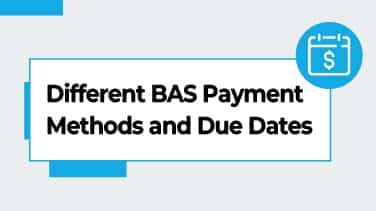
Different BAS Payment Methods and Due Dates
The ATO offers various BAS payment options:
- Electronic transfer to the Reserve Bank of Australia
- Visa, MasterCard, or American Express
- BPAY
- Direct debit from your bank account
- By cheque sent to “Australian Taxation Office, Locked Bag 1936 Albury, NSW 1936”
- In person at any Australia Post
See the ATO website for more details about how to pay BAS.
BAS payment due dates depend on your reporting cycle.
- Monthly: Businesses with a GST turnover of $20 million or more yearly.
- Quarterly: Businesses with a GST turnover of less than $20 million yearly (unless advised by the ATO to report monthly).
- Annually: Businesses that choose to register for GST with a turnover of less than $75,000 a year.
See the ATO website for more details on BAS payment due dates.
If your BAS payment is late, penalties can apply. “Failure to Lodge” penalties are calculated based on the size of your business and how late the payment is.
For example, small businesses with a GST turnover of less than $1 million may incur a penalty of $313 for every 28 days overdue.
If your business has a GST turnover of between $1 million and $20 million, or if you withhold a medium amount of PAYG taxes, the penalty unit is doubled.
For businesses that turnover $20 million or more or withhold a large amount of PAYG taxes, the penalty unit is multiplied by five.
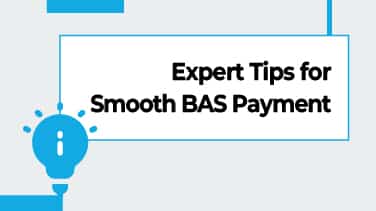
Expert Tips for Smooth BAS Payment
Getting your BAS right is crucial for legal compliance and your business’s financial health.
Here are some expert tips to make the process smoother.
- Prepare early: Collect all your financial documents well before the BAS due date.
- Double-check calculations: Verify your figures to avoid errors.
- Understand your reporting cycle: Know whether you must report monthly, quarterly, or annually and stick to those deadlines.
- Consider payment plans: Explore ATO payment plans if your cash flow situation makes one-time payments tough.
- Seek professional help! Assistance from the experienced bookkeepers and BAS agents at GeekBooks will help you manage your BAS efficiently and in compliance with taxation regulations to avoid costly mistakes.
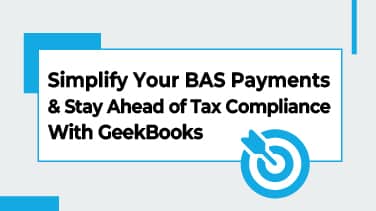
Simplify Your BAS Payments and Stay Ahead of Tax Compliance With GeekBooks
Still scratching your head over how to pay BAS? Read our helpful BAS Preparation Guide and speak to the friendly team here at GeekBooks.
Don’t let BAS payments become a stressor that diverts your focus from growing your business.
With GeekBooks, you gain an expert partner to help you navigate the complexities of BAS tax compliance effortlessly.
From accurate calculations to timely submissions, we take care of it all.
Give yourself the peace of mind you deserve! Complete our online booking form today or call us on 02 9158 3591.


